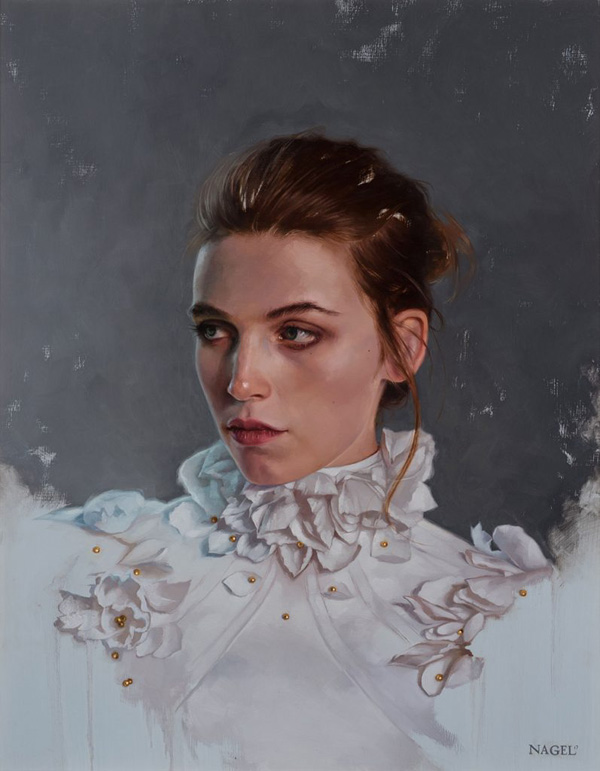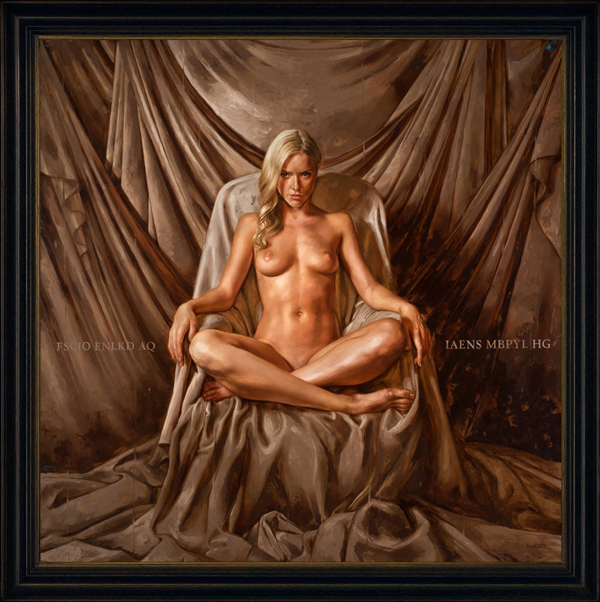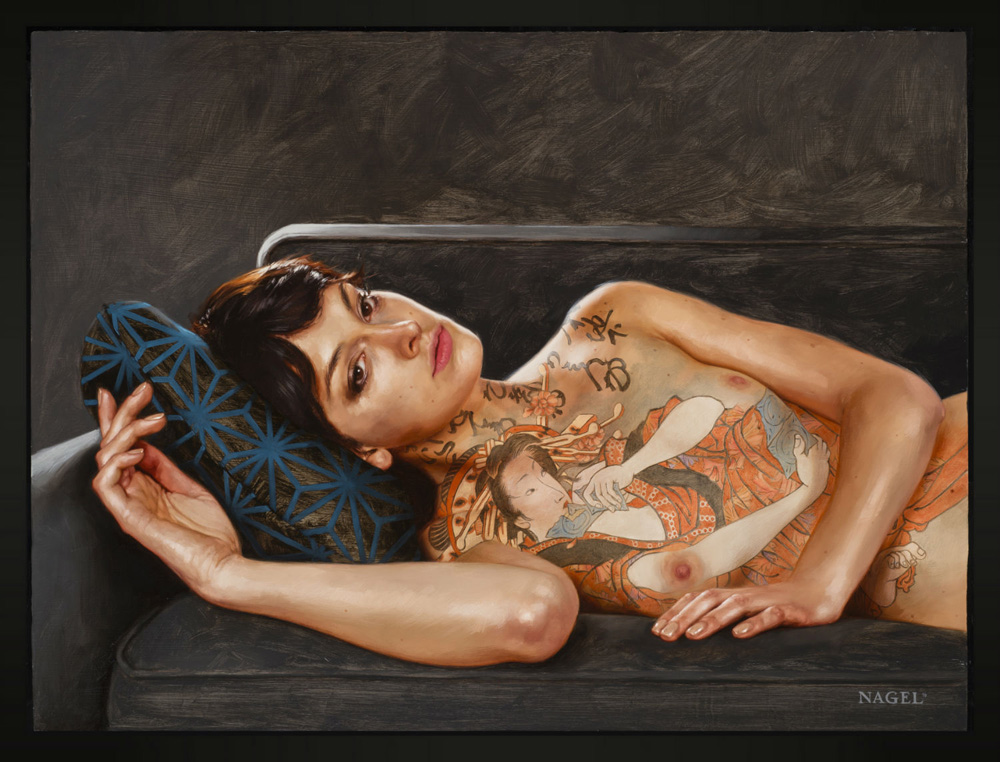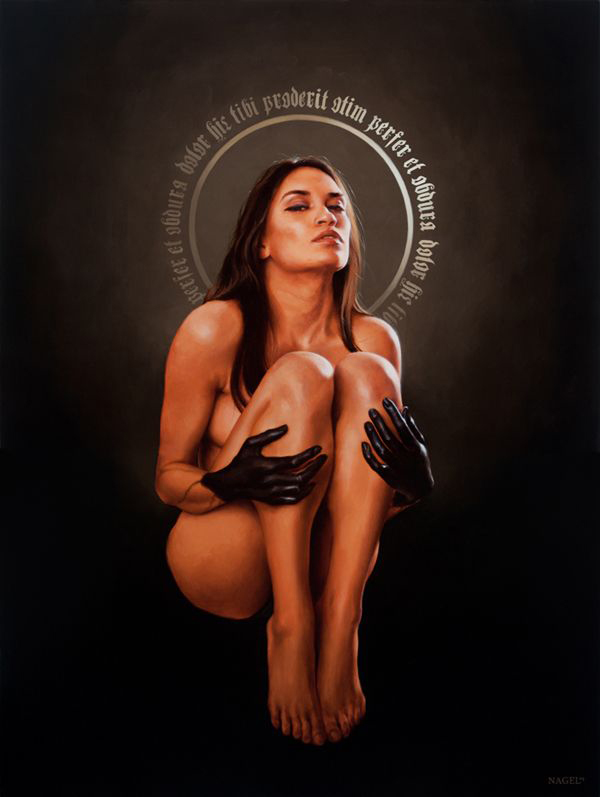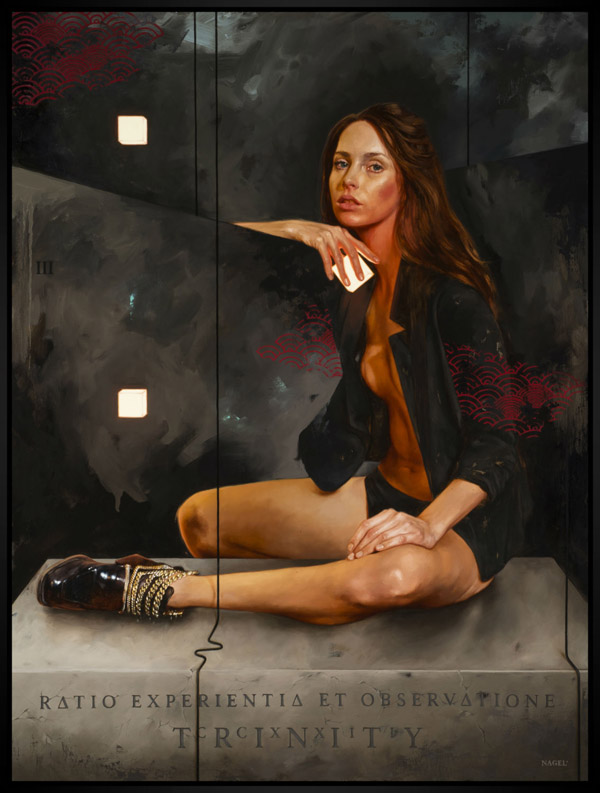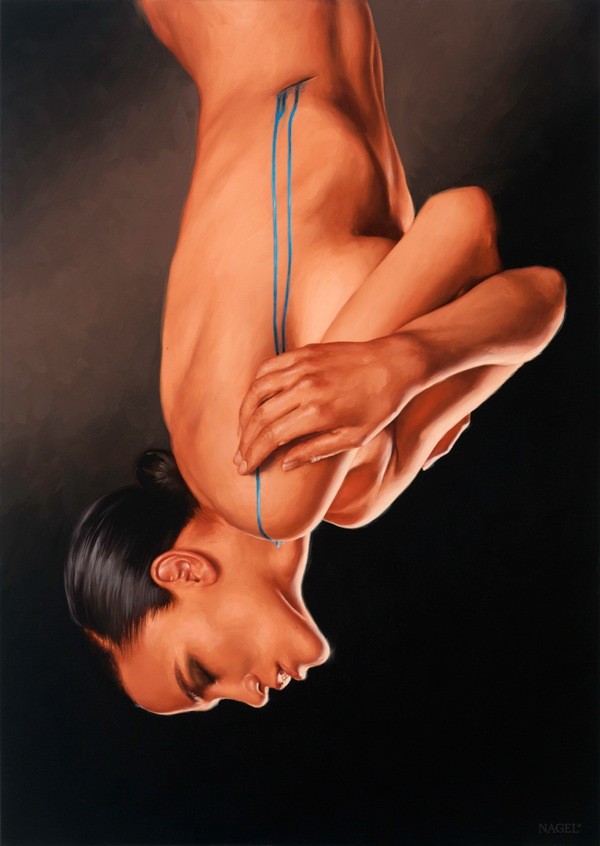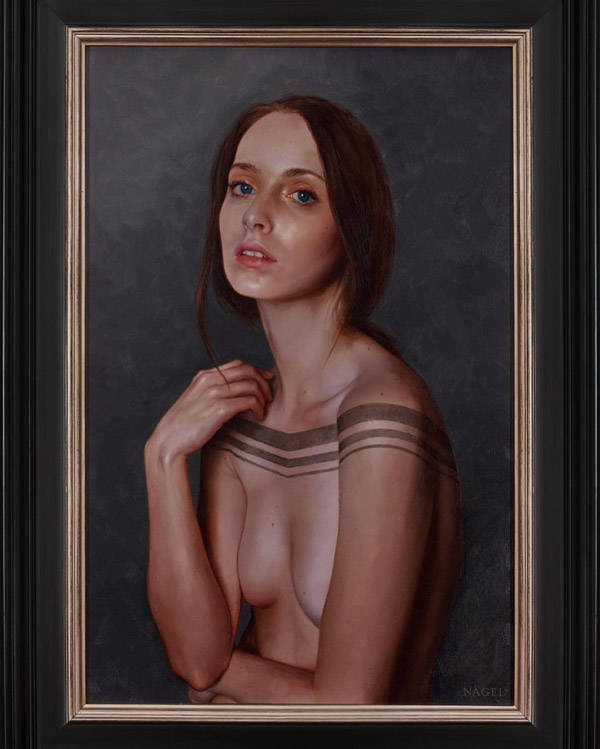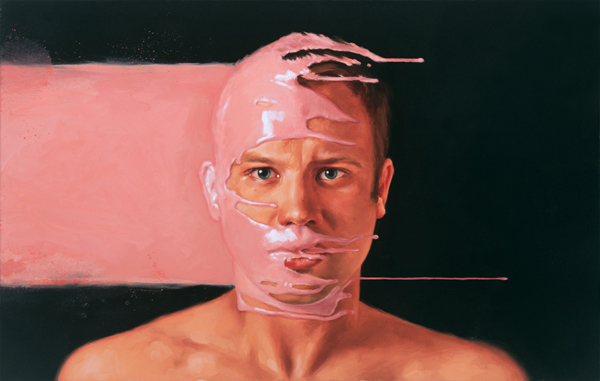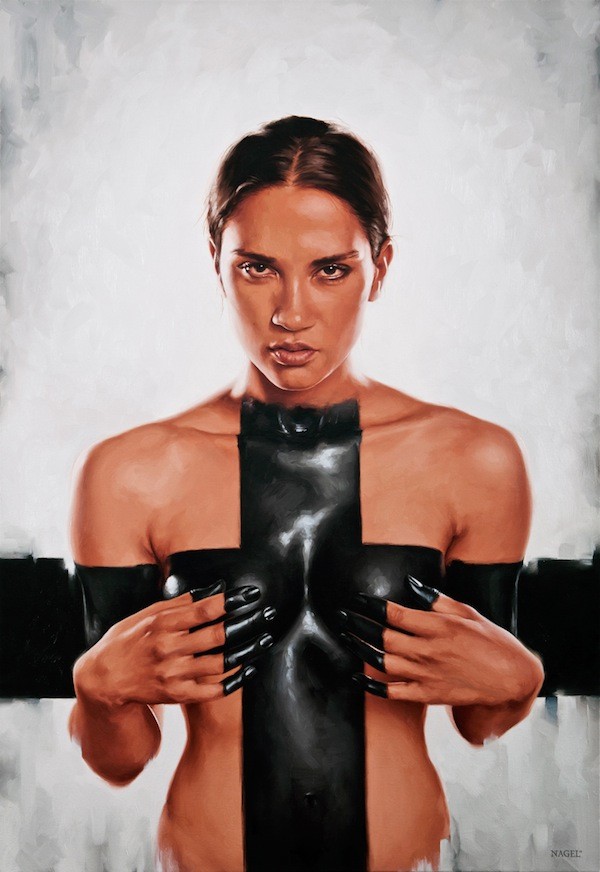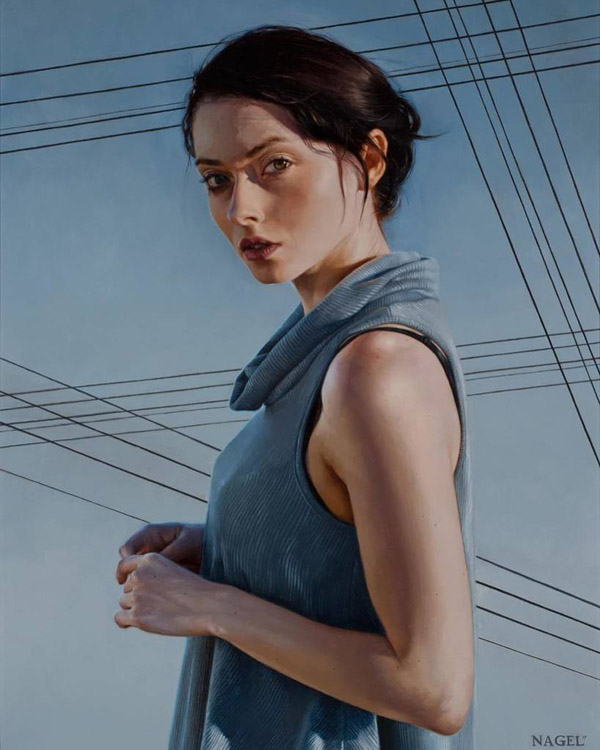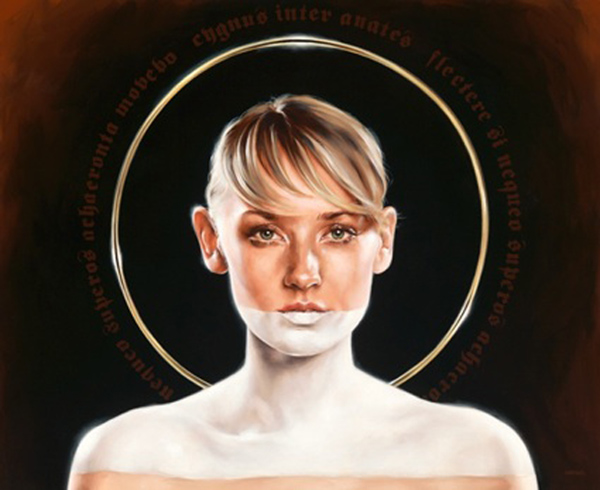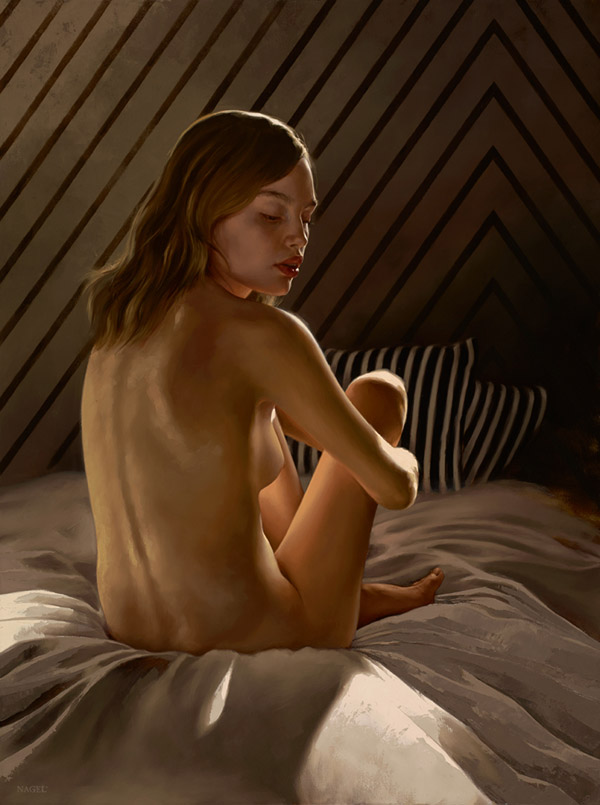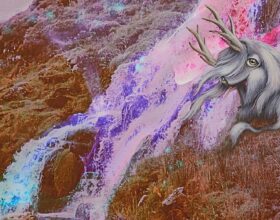Like a dream or an allusion, Aaron Nagel’s exquisitely rendered figurative oil paintings are photo realistic images of his subjects, with one or two somethings that are just a little off from reality. These subtle details make his paintings feel special and strange, and add a surrealistic quality to his work that beckons for a deeper look.
Although Nagel has had no formal education in painting, his affinity for the medium has motivated more than half his life. Although he has always been an artist, creating drawings and paintings since he was a child in San Francisco, after discovering oil paints in his early twenties, his obsession grew into a career, and his masterful execution of figurative artwork has won him awards and international recognition. His surrealist and intimate style of figurative painting touches on the history of religious artwork and portraits, but adding his own voyeurism and engagement with his contemporary slant and commentary through visual positioning, expression, and other added details.
Aaron Nagel was Beautiful Bizarre Magazine’s Issue 005 | June 2014 cover artist!
Like his contemporaries, Nagel’s finest gift is for the execution of the effects of light on a subject. His work often incorporates patterns, textiles and water, along any other fascinating surface that interacts well with light. The details in his work help to assemble a surrealist vantage point, where it feels as though we are looking into a dream—not extreme, not fantastical, but just slightly off from reality. The added voyeuristic gaze and visual tryst with the subjects of his work provides viewers with a somewhat dark, intimate and evocative feeling that is rare.
With a wide range of subjects in his work, his latest models have been feminine and frail looking women, partially or fully nude—but their expressions and positioning lend them a power their frail and thin bodies do not. Additionally, his compositions tend to include a kind of unique daydream moment for his subjects. In their eyes and facial expressions, we, as viewers, get a glimpse at this seemingly private moment. In his older work, his religious art influence was overt and interesting—pushing and pulling the visual compositions inherent in historical religious art, but infusing them into a contemporary style and setting, with light always at the forefront of his focus.
